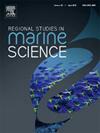Evaluating conservation value and development potential of South Andaman beaches through environmental function analysis
IF 2.1
4区 环境科学与生态学
Q3 ECOLOGY
引用次数: 0
Abstract
The Andaman Islands, known for their rich biodiversity, demonstrate the intricate nature of the situation, as growing tourism and human activities pose a threat to the fragile ecological balance. This study utilized the Environmental Function Analysis (EFA) technique to evaluate the conservation and development capabilities of twenty-five beaches in the South Andaman district. The functional analysis approach entailed identifying a comprehensive array of environmental and socio-economic variables. These variables were subsequently evaluated and standardized to ascertain the conservation value and development potential of each beach. By plotting these scores on a conservation/ use/development matrix, the beaches were classified into three distinct categories: conservation, conflict, and development. The findings revealed a diverse range of beach conditions across the South Andaman district. Five beaches were designated for the conservation zone due to their high ecological value, including Natural Arch, Jolly Buoy Island, Soal Bay, Rutland, and Cinque Island. In contrast, two beaches, Corbyn's Cove and Govinda Nagar, were categorized as development-oriented, influenced primarily by socio-economic factors. The remaining eighteen beaches fell within the conflict zone, where conservation and development potentials were relatively balanced. The conservation scores ranged from 0.50 to 0.91, while development potential scores varied from 0.40 to 0.87, highlighting the diverse management needs across the study area. This analysis also identified key environmental indicators, such as biodiversity richness and ecosystem integrity, and socio-economic factors, including tourism infrastructure and local livelihoods, as critical in determining the management approach for each beach. The insights acquired from the environmental function analysis of South Andaman's beaches highlight the effectiveness of this methodology in managing the complex relationship between ecological preservation and economic advancement in small island coastal regions. The adaptability, holistic perspective, and collaborative approach of this study can help formulate adaptive and inclusive management techniques to conserve these unique and fragile island environments.
求助全文
约1分钟内获得全文
求助全文
来源期刊

Regional Studies in Marine Science
Agricultural and Biological Sciences-Ecology, Evolution, Behavior and Systematics
CiteScore
3.90
自引率
4.80%
发文量
336
审稿时长
69 days
期刊介绍:
REGIONAL STUDIES IN MARINE SCIENCE will publish scientifically sound papers on regional aspects of maritime and marine resources in estuaries, coastal zones, continental shelf, the seas and oceans.
 求助内容:
求助内容: 应助结果提醒方式:
应助结果提醒方式:


